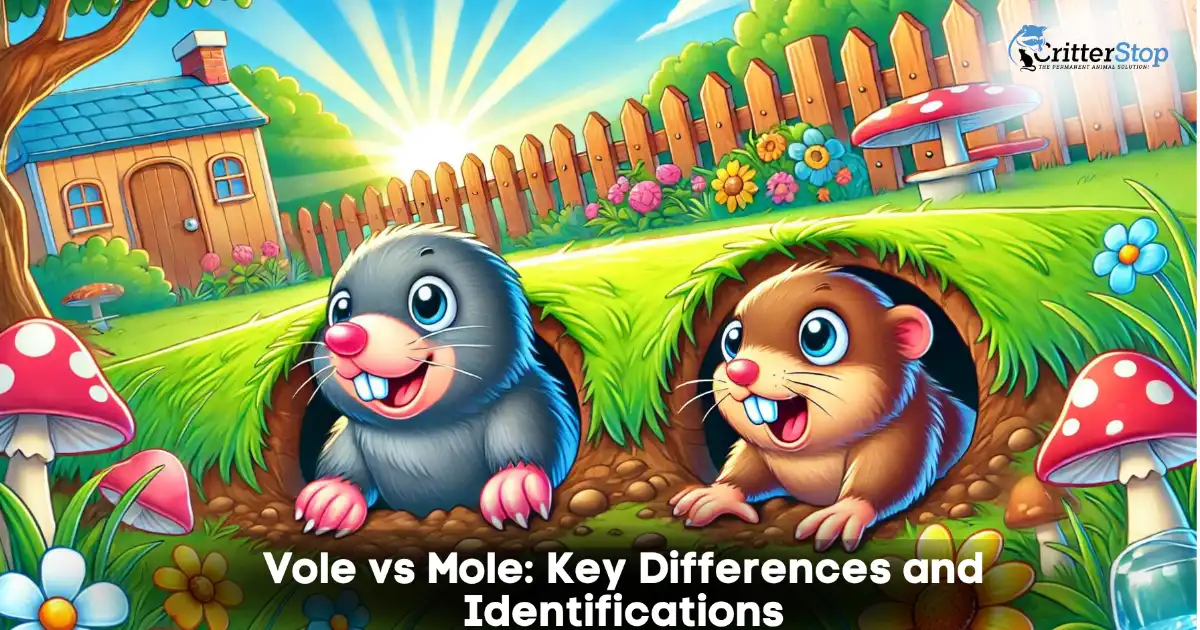
Voles and moles often confuse gardeners and wildlife enthusiasts alike due to their similar-sounding names and burrowing habits. The crucial distinction is that voles are small rodents, while moles are subterranean creatures. Understanding these differences can help in determining appropriate control methods if either becomes a problem in a garden or lawn.
Moles, with their cylindrical bodies and spade-like hands, specialize in tunneling underground, primarily in search of earthworms and grubs. In contrast, voles are small and stocky rodents resembling mice, known for feeding on grasses, roots, bulbs, and seeds close to the surface.
Recognizing whether a gardener is dealing with a vole, mole, gopher, or another creature entirely, is essential for effective management. Each species requires a different approach to control, and knowing what one is facing can lead to better solutions.
Moles and voles are distinct animals within the rodent family, each exhibiting unique characteristics and behaviors that set them apart. Understanding these differences can help individuals identify them correctly in their natural habitats.
Voles are small, burrowing rodents often found in grasslands, fields, and forests. They typically have a stocky body, short legs, and small eyes and ears. Common species include the meadow vole and the water vole.
Voles measure about 4 to 10 inches long, including their short tails. Their fur is usually brown or gray, providing camouflage in their habitats. Unlike moles, voles have a diet primarily consisting of grasses, seeds, and roots.
Socially, voles can be quite active and are often seen in groups. They create extensive tunnel systems in the ground, which can lead to damage in gardens or agricultural fields.
Moles are also small mammals, but they are specialized for a subterranean lifestyle. Their long, pointed snouts and powerful front limbs make them adept at digging. Moles vary in size, typically reaching between 6 to 8 inches in length.
They are known for their velvety fur and large paws, which help them navigate through the soil. Moles primarily feed on earthworms, insects, and other small invertebrates, rather than vegetation.
Unlike voles, moles are generally solitary creatures. They can create extensive tunnel networks, which are often recognizable by the raised ridges on the surface of lawns and fields. Moles serve a vital role in aerating the soil, benefiting plant growth.
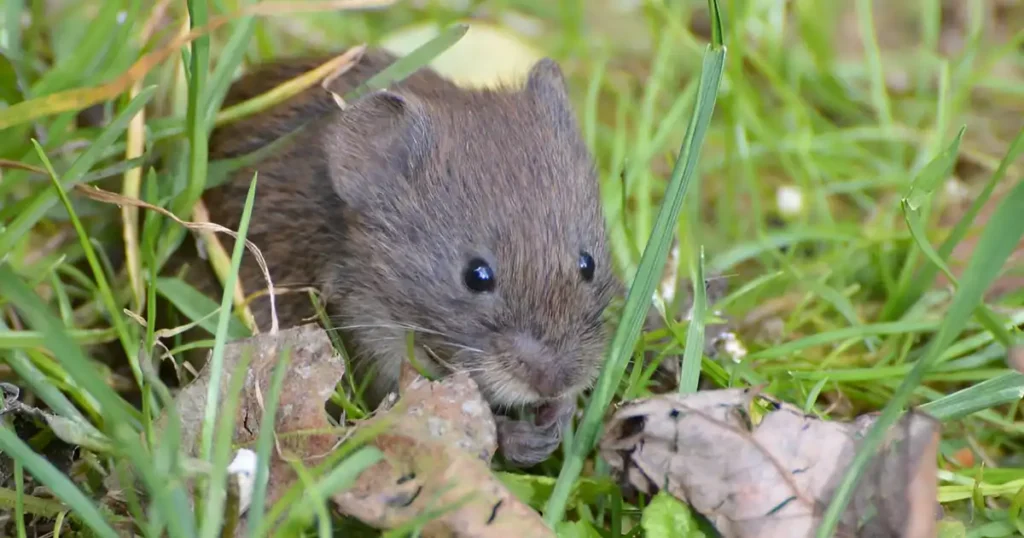
Moles and voles have distinct physical traits that allow for easy identification. Recognizing these characteristics can help in distinguishing between the two species.
In terms of mouse vs vole, voles are small, stocky rodents resembling a cross between a mouse and a rat. They typically measure around 5 to 7 inches in length, including their short tails. Vole fur is soft and dense, often ranging from brown to grayish tones.
Their heads are rounded, with small eyes and ears, making them less visible in their natural habitats. The body structure is robust, with short legs that aid in burrowing. Voles have slightly larger front teeth than moles, adapted for gnawing on vegetation. Their compact size helps them to navigate through grass and vegetation and to create extensive tunnel systems underground.
Moles showcase a unique design suited for a subterranean lifestyle. They are generally larger than voles, averaging 6 to 8 inches in length, excluding their stubby tails. Their fur is velvety, usually dark brown or black, which helps them remain concealed.
Moles have specialized physical features, including powerful, spade-like front paws designed for digging. Their eyes are small and covered by skin, suited for low-light environments. A long, pointed snout enables them to sense their surroundings efficiently in dark tunnels. The body is cylindrical, allowing for smooth movement through the soil.
Visual identification is an effective way to distinguish between moles and voles.
Side-by-side comparisons illustrate the major differences in size, shape, and body structure. Observing these photos can enhance one's ability to identify each species in the wild.
The behaviors of voles and moles differ significantly, influencing their impact on the environment. Understanding these distinctions helps in managing their presence in gardens and landscapes.
Voles are primarily herbivorous, feeding on grasses, seeds, and roots, although they can also eat other small animals. They create extensive tunnel systems that are often visible above ground, leading to observable damage to plants and garden beds.
Social animals, voles live in colonies and exhibit a territorial nature. They communicate using vocalizations and scent markings. Their active hours span both day and night, which can contribute to noticeable foraging activity.
Voles reproduce quickly, with multiple litters annually, which can lead to population surges. Their burrowing habits can cause significant harm to root systems, making them a concern for gardeners and landscapers.
Moles are omnivores, but they primarily eat insects, such as earthworms and grubs. They are known for their subterranean lifestyle, creating elaborate tunnel systems deep underground. Unlike voles, moles do not create visible trails above ground.
Solitary animals, moles are highly territorial and mark their underground territory with secretions. They are most active during the early morning or late afternoon, making their presence felt through tunneling activity rather than surface foraging.
Mole tunnels can disrupt soil structure and damage plant roots, similar to voles. However, their diet focuses mainly on pests, which can be beneficial for soil health when managed properly.
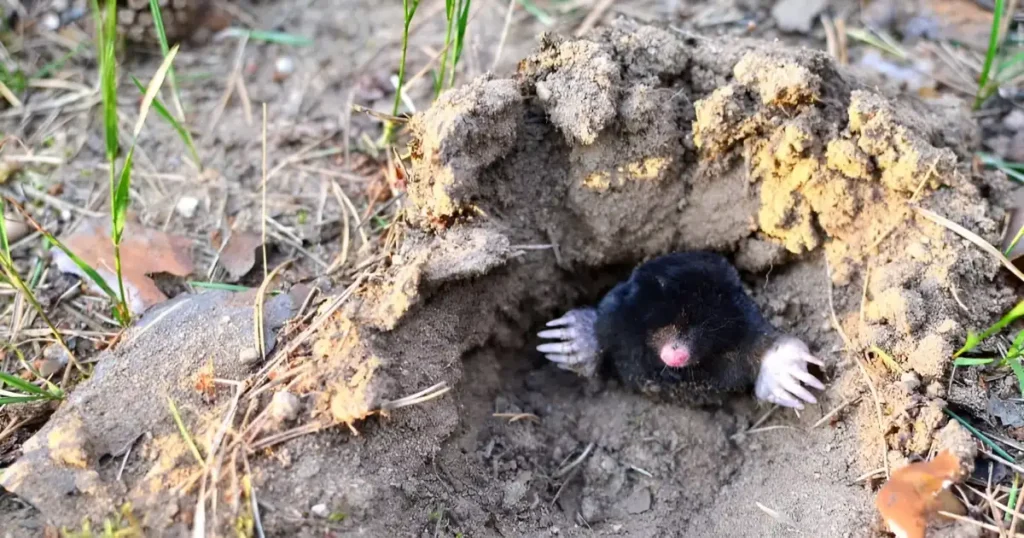
Moles and voles exhibit distinct tunneling behaviors that reflect their differing lifestyles and habitats. Understanding these differences is crucial for identifying each animal's presence in an area.
These tunnels are typically shallow, running just under the surface of the soil. These tunnels are often used for travel between feeding areas and nests.
Voles create a network of tunnels, which can be identified by their grass-lined entrances. They prefer open fields, gardens, and areas with abundant ground cover, allowing for easy access to food sources like roots and grasses.
While they can create complex tunnel systems, these structures do not have the same extensive depth as moles'. Voles are often seen as pests in gardens due to their feeding habits and tendency to damage plants.
In terms of vole tunnels vs mole tunnels, the latter are significantly deeper than those made by voles. Moles dig extensive networks that can reach depths of several feet, reflecting their need for a secure environment to hunt for insects and earthworms.
These tunnels are characterized by raised ridges on the surface, which indicate active digging. Moles prefer moist, rich soils where they can easily excavate and hunt for food.
Mole tunnels are often circular or oval in shape, with a clear distinction between the main tunnels and side passages. They do not typically use the same paths for foraging as voles do, making their tunnels less densely packed.
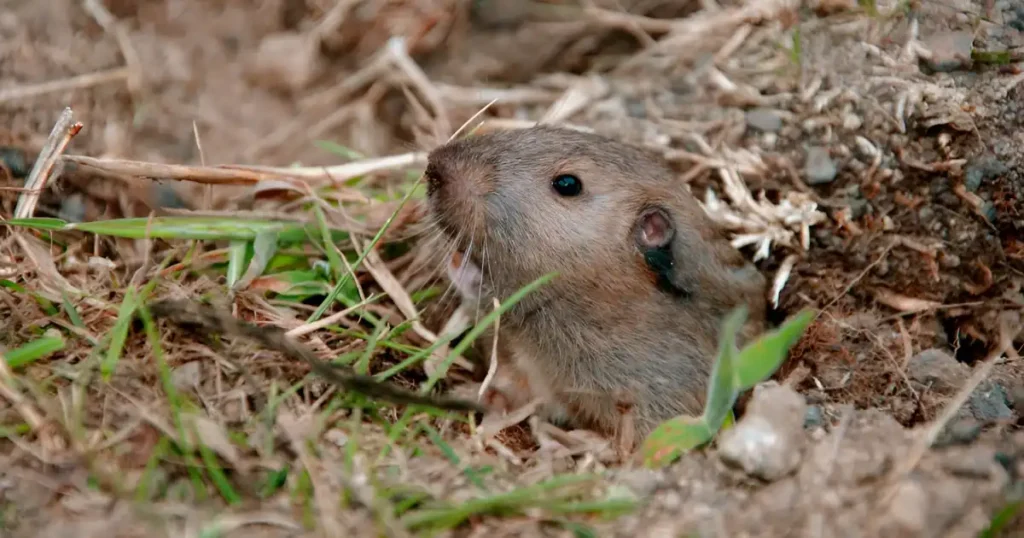
Gopher mounds and mole mounds differ significantly in appearance and structure. Gopher mounds are more round and often appear as small, conical hills on the surface, resulting from their burrowing activities.
Mole mounds, on the other hand, are flatter and have a more irregular shape. They form when moles push soil above ground while creating their deeper tunnels.
While both animals create mounds, gopher mounds tend to be more uniform, whereas mole mounds are characteristically scattered and less organized. Identifying these features can help in accurately distinguishing between gopher and mole activity in an area.
To effectively manage vole and mole populations, it is crucial to identify signs of infestations and implement appropriate control strategies. Swift action can minimize damage to gardens and landscapes.
Recognizing signs of voles and moles is the first step in prevention. Voles typically leave shallow burrows and gnawed vegetation. They may create noticeable trails in grassy areas. Moles, on the other hand, create prominent mounds of dirt from their tunneling activities.
Additionally, moles often damage plants indirectly by disrupting root systems. Understanding the differences can aid in targeting control methods accurately. Each species has distinct markings; for example, voles have small, round holes where they enter their tunnels.
Monitoring these signs helps in early detection and effective management before populations grow.
Several control strategies can mitigate the presence of voles and moles. Habitat modification is essential; keeping lawns well-maintained can deter voles, as they prefer overgrown areas. Removing excess ground cover and debris reduces their hiding spots.
Trapping is a good choice for both mole and vole control. Using bait such as peanut butter or oats can attract voles into traps.
Chemical repellents may also prevent voles but should be used cautiously to avoid harming non-target species. Understanding the specific habits of each animal is key to developing effective strategies that minimize damage.
Dealing with the problem yourself can be cheaper, but keep in mind that it could not be as effective as you hope. The best way to deter moles, have mole traps work, and effectively control these creatures is to hire a professional wildlife removal company.
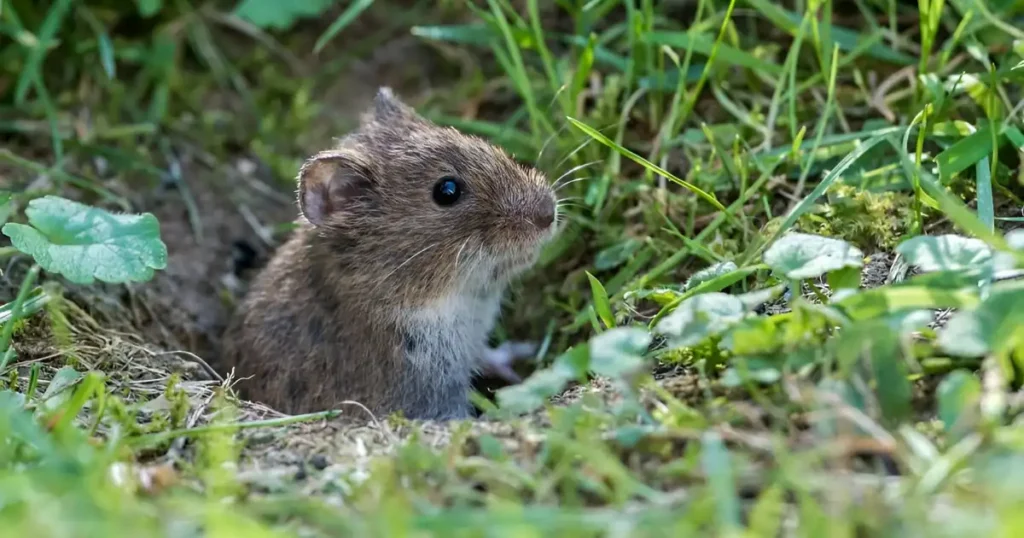
Both voles and moles can cause significant damage to gardens and landscapes, but their methods and the types of damage they inflict differ. Understanding these differences aids in identifying specific threats and implementing effective control measures.
Voles primarily damage plants and crops through their feeding habits. They are herbivores and tend to consume grasses, roots, and other vegetation.
Their feeding often leads to:
Gopher voles can cause similar problems, particularly in lawns and gardens, where they create intricate tunnel systems that undermine soil structure.
Moles are primarily insectivores and primarily damage landscapes through their tunneling behavior. They create extensive underground burrows and tunnel systems that can impact surface vegetation.
Key aspects of mole damage include:
Both types of damage can severely impact the health of gardens and lawns, making timely identification crucial.
This section addresses common queries regarding voles and moles, focusing on their differences, visual characteristics, and management options among other related topics.
Voles are small, stocky rodents with short tails, while moles are small, burrowing mammals known for their cylindrical bodies and large front paws. Voles primarily feed on vegetation, whereas moles consume insects and earthworms.
In pictures, voles typically present a rounder face and a shorter, less pointed snout in comparison to moles. Moles have noticeable spade-like front feet adapted for digging, whereas voles possess smaller, less pronounced limbs.
Property owners may seek to remove voles if they cause damage to gardens and landscaping by feeding on plants. Moles might be targeted for removal due to the mounds they create, which can disrupt lawns and gardens.
Voles can benefit the ecosystem by serving as prey for various predators, helping sustain their populations. They can also aerate the soil through their burrowing. Conversely, large populations may lead to overgrazing, negatively impacting plant life.
Good management methods for voles include habitat modification, such as removing dense ground cover. For moles, trapping remains a common method. Both species may also be managed using repellents and exclusion techniques to protect gardens and landscapes. However, the most effective method to deal with them is to get in touch with a professional pest control company.
If you are dealing with critters in your yard, attic, or any other place in your home, Critter Stop has got your back! We have a five-star reputation in servicing commercial and residential customers in Texas, ensuring that all critters are removed humanely and that your home is protected against future invasions. Contact Us at (214) 234-2616 and schedule your free inspection and estimate today!
Visit our Critter Library and learn more about our furry friends